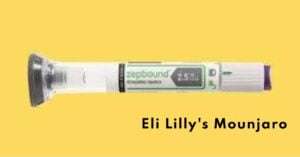
Table of Contents
A Comprehensive Guide to Women’s Nutrition for Optimal Health
Eating well is essential for women’s health and wellbeing at all stages of life. What we put into our bodies has a tremendous impact on our energy, mood, disease risk and quality of life as we age. This in-depth guide explores women’s unique nutritional needs and provides science-backed advice for healthy eating during every phase from puberty through menopause and beyond.
Why Women Have Special Nutritional Requirements
Women’s nutritional needs differ from men’s in significant ways due to hormonal differences, the demands of pregnancy and breastfeeding, and changes through key life stages. Here’s an overview of the key factors driving women’s specialized needs:
Hormonal Effects
Women experience major hormonal fluctuations during puberty, menstruation, pregnancy and menopause. These hormonal shifts affect everything from mood to metabolism. Consuming adequate nutrients can help balance hormones for optimal wellbeing.
Higher Iron Needs
Due to blood loss during menstruation, women require up to twice as much iron daily compared to men. Insufficient iron causes anemia and fatigue.
Importance of Calcium
Estrogen helps women absorb and retain calcium more efficiently before menopause. Calcium supports bone health, which declines rapidly after estrogen drops during menopause.
Folate for Fetal Development
Folate requirements surge prior to and during pregnancy to lower the risk of neural tube birth defects. Adequate folate intake remains important during the childbearing years.
Pregnancy and Breastfeeding
Carrying and nursing a baby significantly increases nutritional needs for nutrients like protein, omega-3s, choline, iodine, magnesium and B vitamins.
Nutrient Absorption Changes
Gastrointestinal changes as women age can result in decreased absorption of key nutrients like calcium, vitamin D, B12 and iron over time.
Given these varied needs, it’s clear women must take special care to tailor their dietary choices to their current life stage for optimal wellbeing.
Key Nutrients Women Should Emphasize
While all essential vitamins and minerals are necessary, research shows women commonly fall short on the following key micronutrients:
Iron
Iron enables red blood cells to carry oxygen efficiently. Inadequate iron causes fatigue, weakness and impaired cognition. Women aged 19-50 need 18 mg daily. Meat, seafood, spinach, lentils, fortified cereal and tofu are good sources.
Calcium
Calcium maintains bone strength. Low bone density raises fracture risk as we age. Women aged 19-50 need 1000 mg daily from yogurt, milk, kale, broccoli, cheese, calcium-set tofu, sardines with bones and fortified plant milks.
Folate
Folate forms new cells and prevents neural tube defects. Childbearing aged women need 400 mcg daily from leafy greens, asparagus, legumes, avocado, beets, oranges and nutritional yeast. Folic acid from fortified foods and supplements is more bioavailable than food folate.
Vitamin D
Vitamin D aids calcium absorption for bone health. Low levels are linked to diabetes, cancer and autoimmune diseases. Get your daily 600 IU from sunlight, fortified milk/juice, mushrooms and fatty fish or consider a supplement.
Magnesium
Magnesium regulates hundreds of bodily functions including blood pressure, blood sugar and PMS symptoms. Women need 320 mg per day from spinach, pumpkin seeds, yogurt, kefir, almonds, black beans, avocado, dark chocolate and bananas.
Omega-3s
These healthy fats lower inflammation and heart disease risk while aiding fetal brain development. Aim for 500 mg EPA/DHA daily from fatty fish, walnuts, ground flax/chia seeds and algae supplements.
Antioxidants
Antioxidants like vitamin C, vitamin E, carotenoids and polyphenols fight free radicals that cause cell damage. Eat a rainbow of vegetables and fruits to meet needs. Berries, citrus fruits, broccoli, leafy greens, tomatoes and nuts are top sources.
Getting enough of these nutrients from whole food sources should form the foundation of every woman’s daily diet. Supplements can fill in gaps when needed.
How Nutrition Needs Change Throughout A Woman’s Life
A woman’s nutrient requirements fluctuate based on growth, pregnancy, breastfeeding and hormonal changes. Understanding these shifts enables proper nutrition during each life stage.
Childhood
Adequate protein, calcium, vitamin D and iron support growth and development. Establish healthy eating patterns like eating breakfast, getting 5 servings of fruits/vegetables daily and limiting junk foods.
Puberty & Adolescence
Rapid growth demands more protein, vitamins D and C, B vitamins, magnesium and zinc. Extra calcium and iron are critical. Set the foundation for lifelong nutrition habits like preparing nutritious meals and snacks.
Early Adulthood
Eating nutritiously, exercising regularly and maintaining a healthy weight in the 20s/30s boosts lifelong health. Consume a balanced diet with adequate iron, calcium and folate. Limit alcohol and salty, sugary processed foods.
Pregnancy
Prenatal vitamins with iron, folate and DHA safeguard mom and baby. Increase protein, vitamins A/C/B6/B12, magnesium, omega-3s and choline. Stay hydrated. Avoid alcohol, unpasteurized dairy/juice and raw meat/eggs.
Breastfeeding
Nursing moms need extra calories, protein, B vitamins, vitamin C, iron, magnesium, zinc, selenium and iodine. Drink to thirst and munch on nutrient-packed snacks for energy. Calcium and vitamins D/A are still important after pregnancy.
Perimenopause
Hormone shifts may increase PMS and menstrual changes. Balance hormones and mood with whole grains, healthy fats, phytoestrogen-rich foods like flaxseeds and soy, plus B vitamins, magnesium and vitamin D.
Menopause
Estrogen drop increases heart disease and osteoporosis risk. Emphasize bone-protecting calcium and vitamin D. Eat heart healthy fats, manage stress and body weight. Be vigilant about getting enough iron, vitamins B12 and D.
Postmenopause
Nutrition vigilance is vital as appetite and absorption decline. Cook with bone broth for calcium. Consume magnesium and zinc-rich foods. Keep bowels regular with fiber. Supplements may be warranted if needs aren’t met through diet.
No matter what stage a woman is traversing, paying attention to evolving nutritional needs is the foundation of lifelong health and wellness.
Healthy Eating Guidelines for Teen Girls
Establishing healthy eating patterns during adolescence sets the stage for proper nutrition during adulthood. Here are diet tips for thriving teens:
Make Nutritious Foods the Mainstay
Construct balanced meals and snacks from whole foods like fruits, veggies, whole grains, lean protein, legumes, nuts, seeds and dairy. Limit sweets, salty snacks and sugary drinks.
Power Up with Iron
Menstruation increases iron needs. Young girls should regularly eat iron-rich meat, poultry, oysters, pumpkin seeds, white beans, lentils, spinach and iron-enriched cereal. Vitamin C boosts iron absorption.
Pile on Phytochemical-Rich Produce
Phytochemicals in fruits and vegetables act as antioxidants, support hormone health and protect growing bodies. Strive for 2-3 servings of fruit and 2-3 servings of veggies daily.
Maximize Bone-Building Nutrients
Consistently eating calcium and vitamin D rich foods like yogurt, cheese, milk, leafy greens, nuts, fortified juice and salmon facilitates maximum bone mass accrual.
Hydrate Healthfully
Water is best. Limit excess calories from sugary bottled teas, sports drinks, juices and sodas. Caffeine shouldn’t exceed 100mg daily from sodas, coffee, tea or energy drinks.
Portion Perfectly
Moderate portions of nutritious foods ensure adequate calories for growth without excess weight gain. Practice mindful eating by paying attention to hunger/fullness cues.
Develop a Nutrition Game Plan
Collaborate as a family to meal plan, grocery shop, batch prep breakfasts & snacks, limit eating out and have wholesome dinners together. Modeling healthy habits at home is powerful.
Equipping teen girls with fundamental nutrition knowledge positions them for a lifetime of wellness. Establishing healthy habits now pays dividends across their lifespan.
Nutrition Priorities During Pregnancy
Maintaining excellent nutrition during pregnancy benefits both mother and developing baby. Here are diet priorities for expectant mothers:
Energy Balance
Weight gain should follow recommended guidelines. Only increase calories by 300 per day in the 2nd and 3rd trimesters as needed to support baby’s growth and Hungry for 2.”
Supercharge Micronutrient Intake
Eat folate, iron, calcium and omega-3 rich foods. Take a prenatal vitamin with iron and 150 mcg iodine. Iodized salt, dairy, seafood and eggs also supply iodine for fetal brain development.
Amp up Protein
Choose protein sources like poultry, fish, eggs, Greek yogurt, cottage cheese, beans, lentils, nuts and seeds daily. Protein is vital for baby’s cellular growth and placental development.
Stay Hydrated
Drink when thirsty to allow for increased blood volume and amniotic fluid. Water, fruit/veggie juices, milk, soups and decaf tea all contribute to fluid goals. Limit caffeine and avoid alcohol.
Satisfy Cravings and Food Aversions Wisely
Give in to cravings in moderation by choosing healthy versions like fruit instead of candy or yogurt instead of ice cream. Discuss severe aversions with your doctor.
Practice Food Safety
Avoid raw fish/meat, unpasteurized juices/dairy, raw sprouts, deli meats and smoked seafood to prevent foodborne illness. Handle, store and reheat foods properly. Wash all produce.
Meeting increased nutritional needs through a balanced, whole food diet plus supplementation positions mothers-to-be for safe pregnancy and delivery.
Postpartum Nutrition for New Moms
Nourishing the body after giving birth is essential. Here are nutrition tips for recovering from delivery and adjusting to motherhood:
Replenish Nutrient Stores
Continue taking your prenatal vitamin and emphasize iron, folate, fiber and magnesium rich foods to recoup depleted nutrient reserves following delivery.
Rehydrate Thoroughly
Drink to satisfy thirst and enrich milk supply. Water, fruit juices, soups, herbal teas and low-sodium broths temporarily replace caffeinated/alcoholic beverages.
Nourish Exhausted Bodies
New moms need about 400 extra calories daily. Snack frequently on hummus and veggie dippers, smoothies, nuts and seeds, full-fat Greek yogurt and cheese for energy.
Feed Hungry Babies
Breastfeed on demand to stimulate ample milk production. Stay hydrated and keep quick, nourishing snacks like bananas, boiled eggs, oatmeal and applesauce on hand.
Boost Nutrients Important for Lactation
Eat plenty of vitamin C, A and B rich foods. Seafood, nuts, avocados and olive oil provide DHA for baby’s brain. Consider an omega-3 supplement too.
Heal Completely Before Rigorous Exercise
Postpartum yoga, walking and low-impact cardio can begin once approved at 6 week follow-up. Build back intensity gradually. Rest to recover.
Seek Personalized Supplement Recommendations
Talk to your doctor about supplements like probiotics, vitamin D, calcium, magnesium or iron that may enhance your postpartum nutrition regimen.
Optimal post-delivery nourishment coupled with ample rest, hydration and a gradual return to exercise promotes full recovery for mom and baby.
Menopause Nutrition Strategies
Fluctuating hormones during perimenopause and menopause affect energy, mood and health. Strategic dietary changes can ease common symptoms.
Choose Complex Carbohydrates
Whole grains, starchy vegetables and fruits provide steady energy. Limit refined grains, sugar and alcohol which cause blood sugar crashes and exacerbate symptoms.
Increase Plant Protein
Beans, lentils, tofu and tempeh support heart health and hormone balance. Limit red meat linked to heart disease and diabetes risk.
Embrace Estrogen-Containing Foods
Phytoestrogens in flaxseeds, soybeans, oats, apples, carrots and alfalfa help minimize hot flashes, night sweats and mood swings.
Fortify Bones
Boost calcium and vitamin D to compensate for bone loss from dropping estrogen levels. Weight-bearing and muscle strengthening exercise also helps.
Stay Hydrated
Drink at least 8 cups of fluids like water, herbal tea and diluted fruit juice daily. Dehydration worsens menopausal discomforts.
Practice Mindful Eating
Make time to sit down and savor nutritious meals. Control portions and avoid mindless snacking in front of screens which can lead to weight gain.
Targeting menopausal symptoms with nutrition and lifestyle interventions promotes thriving through this transitional life phase.
Healthy Aging Dietary Guidelines
Advancing age brings changes in nutritional needs. Here are tips for mature women to eat well and age vibrantly:
Know Key Nutrient Recommendations
RDA guidelines provide daily targets for nutrients like calcium (1200mg), vitamin D (600 IU), vitamin B12 (2.4mcg over age 50), and vitamin B6 (1.7mg over age 50).
Cook with Nutrient-Rich Ingredients
Whip up dishes that incorporate fatty fish, leafy greens, mushrooms, beans, nuts, seeds, whole grains and fruits and vegetables of all colors.
Address Chewing and Swallowing Issues
Difficulty with eating due to dental problems or swallowing issues increases malnutrition risk. Choose soft, moist, pureed foods. Discuss significant issues with your doctor.
Remain Physically Active
Aerobic, muscle strengthening and balance exercises help maintain strength and mobility needed for daily living. Adequate protein intake preserves muscle.
Discuss Supplements with Your Physician
Absorption issues mean many older adults can benefit from supplements containing vitamin B12, vitamin D, calcium, magnesium and omega-3s. Ask your doctor for guidance based on your needs.
Tweaking nutrition and lifestyles appropriately facilitates healthy aging, longevity and improved quality of life.
Benefits of a Largely Plant-Based Diet
Emphasizing wholesome plant foods offers myriad benefits for women throughout adulthood. Here’s a closer look:
Lower Risk for Numerous Chronic Diseases
Plant-based diets are associated with decreased inflammation which underlies conditions like diabetes, heart disease, obesity, cancer and osteoporosis.
Healthy Gut Environment
Fiber nourishes gut microbiota which then produce beneficial compounds that reduce inflammation and improve gut barrier integrity. This promotes good digestion and immunity.
Ideal Weight Management
Higher fiber and lower calorie density aid sustainable weight management. Fiber improves satiety while fruits and vegetables have fewer calories than many processed snack foods.
Increased Antioxidant Intake
The wide array of antioxidants, polyphenols and phytochemicals in plant foods reduce free radical damage that can lead to premature aging and disease.
Blood Sugar and Insulin Regulation
Higher fiber content blunts blood sugar spikes. Polyphenols may also improve insulin response and sensitivity thereby reducing diabetes risk.
Cardiovascular Protection
Soluble fiber lowers LDL cholesterol. Nitrates in vegetables improve blood flow. Carotenoids reduce oxidation and inflammation which underlie heart disease.
Lower Environmental Impact
Choosing plant-based proteins over meat vastly reduces carbon emissions plus land and water usage making this a diet with sustainability benefits.
A predominantly plant-focused diet centered around whole foods clearly offers today’s woman superior nutrition for optimal health.
Two Lifelong Healthy Habits: Physical Activity and Adequate Hydration
Along with proper nutrition, two lifestyle factors—regular exercise and optimal hydration—are vital for a woman’s health across her lifespan.
Make Physical Activity Non-Negotiable
Aim for at least 150 minutes per week of moderate intensity activity like brisk walking. This lowers risk for numerous chronic diseases and age-related declines in mobility and cognition. Any movement counts, so take the stairs, walk around while on the phone and limit sedentary time.
Drink Up for Wellness
Carry a water bottle as a reminder to sip frequently. Let thirst guide intake. Fluids are essential for energy, organ function, blood pressure, body temperature regulation and metabolism. Dehydration drags you down mentally and physically. Consume plenty of fluids from water, herbal teas, fruits, vegetables and broth-based soups.
Get Enough High Quality Sleep
Prioritize 7-8 hours nightly. Chronic skimping on sleep raises risk for obesity, heart disease and diabetes. Develop a relaxing bedtime ritual. Limit blue light exposure before bed from phones, tablets and TVs which disrupt circadian rhythms.
Master Stress Management Techniques
Untamed chronic stress can accelerate aging and promote weight gain, insomnia, depression and inflammation. Regularly practice calming activities like yoga, deep breathing, meditation, nature walks and laughter with friends. Don’t neglect stress-relieving social connection.
Adopt an Attitude of Gratitude
Focusing on blessings cultivates positivity. Feel grateful for health, loved ones, nature’s beauty and simple pleasures. Perform volunteer work for an added sense of purpose and community. An optimistic outlook boosts emotional health.
The right nutrition supplies the body with the tools needed to thrive. Combine eating well with staying active and developing attitudes and habits which nourish the mind and you have the formula for aging vibrantly.
The Bottom Line on Women’s Health
Science confirms women have unique and varying nutritional requirements influenced by reproductive hormones, key life stages and lifestyle factors. Eating a consistently balanced diet focused on whole, nourishing foods supports
Meal Planning Tips for Healthy Eating
Careful meal planning is key to maintaining a balanced diet full of nutrient-dense foods. Here are some tips for planning wholesome meals and snacks:
Incorporate Nutrient-Rich Foods
Build meals around vegetables, fruits, whole grains, proteins and healthy fats. This ensures you get a variety of vitamins, minerals and antioxidants.
Follow the Plate Method
Fill half your plate with non-starchy vegetables, a quarter with lean protein and a quarter with whole grains for balanced macronutrient ratio.
Vary Vegetables
Aim to get a rainbow of veggies. Dark leafy greens, red peppers, orange carrots, tomatoes and purple eggplant provide different phytochemicals.
Choose Whole Grains
Opt for whole-grain breads, oats, quinoa, brown rice, millet and barley instead of refined grains. They provide more fiber, protein and micronutrients than processed choices.
Mix up Proteins
Choose plant and animal proteins like beans, lentils, tofu, tempeh, eggs, fish, poultry and yogurt for a change of pace. This guarantees adequate amino acids.
Add in Fruits and Healthy Fats
Round out meals with fruit, nuts, seeds, olives, avocado and olive oil for antioxidants, phytochemicals and anti-inflammatory fats.
Prep Ahead
Save time by chopping veggies and batch cooking grains and beans for quick meals. Stock up on roasted vegetables and cooked whole grains to throw together lunches easily.
Drink Water
Stay hydrated and avoid empty calories by enjoying water with meals instead of sugary drinks. Infuse water with fruits and herbs for flavor.
Planning ahead takes the guesswork out of eating balanced, nutritious meals for health and energy.
Key Nutrients for Strong Bones Across a Woman’s Lifespan
Maintaining bone strength through all life stages prevents fractures and enables mobility. Here are key bone-supporting nutrients women need at different times.
Childhood & Adolescence
- Calcium – Forms the mineral matrix of bones. Dairy, leafy greens, soy and fortified foods are top sources.
- Vitamin D – Aids calcium absorption and bone mineralization. Sunlight, fortified dairy/juice and seafood provide vitamin D.
- Vitamin K – Supports bone matrix proteins. Found in leafy greens, soybeans, dairy and fermented foods.
- Protein – Provides amino acids for bone matrix formation. Meat, dairy, eggs, beans and nuts offer protein.
Young Adulthood
- Calcium – Continues to optimize bone mass. Yogurt, milk, kale and broccoli are excellent sources.
- Magnesium – About 60% is stored in bones. Found abundantly in nuts, seeds, leafy greens, fish and avocados.
- Vitamin C – Needed for collagen formation which strengthens bones. Citrus, peppers, broccoli and tomatoes contain vitamin C.
Pregnancy & Breastfeeding
- Calcium – Ensures adequate maternal bone reserves are preserved to meet fetal skeletal needs.
- Vitamin D – Maintains maternal calcium absorption to allow fetal bone mineralization.
- Magnesium – Supports maternal and fetal bone matrix proteins. Found in leafy greens, nuts and fish.
Perimenopause
- Calcium – Crucial due to increasing bone breakdown as estrogen declines. Low-fat dairy and leafy greens help meet the 1200 mg daily needs.
- Vitamin D – Boosts calcium absorption. Oily fish, fortified dairy and limited sun exposure provide vitamin D.
- Magnesium – Prevents excessive bone turnover associated with estrogen drop. Nuts, seeds, leafy greens and whole grains provide magnesium.
Postmenopause
- Calcium – Slows accelerated bone loss and risk of osteoporosis. Continue calcium-rich foods and discuss supplements with your doctor.
- Vitamin D – Doctors recommend 600-800 IU daily. Take a supplement if dietary sources are insufficient.
- Protein – Ensures adequate intake for maintaining bone matrix. Include plant and animal protein sources.
A lifespan approach to nutrition supports skeletal health and strength from infancy into mature age.
The Anti-Inflammatory Diet: Ideal for Women’s Health
Chronic inflammation underlies numerous common conditions like autoimmune disease, arthritis, heart disease, diabetes, PCOS and certain cancers. Choosing anti-inflammatory foods reduces women’s health risks.
Load up on Anti-Inflammatory Fruits and Vegetables
Fruits and vegetables high in antioxidants prevent inflammatory responses. Especially berries, citrus fruits, broccoli, leafy greens, sweet potatoes, tomatoes, grapes and papaya.
Choose the Right Proteins
Swap red meat for anti-inflammatory proteins like fatty fish, beans, nuts, seeds, eggs, soy and yogurt. They have less artery-clogging saturated fat.
Opt for Whole Grains
Refined grains and added sugars promote inflammation. Instead choose intact whole grains like oats, quinoa, farro and brown rice that digest more slowly.
Embrace Healthy Fats
Monounsaturated and omega-3 fats have anti-inflammatory effects. Use olive oil, avocados, nuts, seeds and oily fish. Limit pro-inflammatory trans and saturated fats.
Stay Hydrated
Drink plenty of fluids, especially water. Dehydration can cause inflammation. Herbal tea and diluted fruit juices also contribute to hydration.
Develop a Positive Mindset
Chronic stress boosts inflammatory markers. Cultivate optimism, purpose, gratitude and joyfulness for mental and physical health benefits.
Incorporating anti-inflammatory foods and lifestyle practices significantly reduces women’s risks for numerous chronic diseases.
Nutrient-Dense Foods to Help Women Meet Iron Needs
Women require extra iron to replace blood losses from menstruation. Choosing iron-rich foods prevents fatigue.
Red Meat
Beef, lamb and pork supply heme iron most readily absorbed by the body. Have a few times weekly in 3- to 4-ounce portions.
Poultry & Seafood
Iron in chicken, turkey and oysters, clams and mussels is absorbed decently. Have a few servings weekly.
Legumes
Kidney beans, chickpeas, lentils and soybeans offer iron. Vitamin C foods help absorption. Enjoy beans multiple times a week.
Nuts & Seeds
Almonds, cashews, pumpkin and sesame seeds have iron. Enjoy as snacks or sprinkled onto entrees and salads.
Fortified Cereals & Grains
Look for iron-enriched breakfast cereals, bread, pasta and rice. Pair with vitamin C-rich foods to enhance absorption.
Leafy Greens
Spinach, kale and broccoli supply iron. Eat cooked or raw daily as part of main dishes, sides or salads.
Dried Fruit
Dried apricots, prunes and raisins contain iron. Enjoy a small serving combined with an iron-rich nut or seed snack.
Eating a balanced diet with plenty of whole grains, nuts, vegetables and lean proteins guarantees adequate iron intake for energy.
Tips for Healthy Eating on a Budget
Healthy diets can fit any budget. With planning and smart shopping, nutritious eating doesn’t have to be expensive.
Plan Out Your Meals
Make a weekly meal plan based on grocery store flyers for what’s on sale. Planning reduces impulse purchases and food waste.
Stretch Meat with Vegetables
Use meat as a flavoring for dishes rather than the main component. Bulk up chili, pasta sauce, soups and stews with beans, vegetables and whole grains.
Prep Food from Scratch
Packaged convenience foods have added costs. Save by making your own granola bars, hummus and baked goods using basic whole food ingredients.
Focus on Inexpensive Nutrient Powerhouses
Buy in-season fresh or frozen produce like carrots, cabbage, potatoes, bananas and apples. Canned or dry beans, eggs, peanut butter and canned fish keep costs low.
Look for Frozen Produce
Frozen fruits and vegetables retain nutrients and often cost less than fresh. Stock up when sales run. Blend into smoothies or sauté as sides.
Shop Store Brands
Opt for generic no-frills brands rather than costly name brands. Store brands are just as nutritious for staples like milk, yogurt, canned beans and cereal.
Buy Whole Foods in Bulk
Purchasing nuts, seeds, whole grains and beans from bulk bins saves money. Portion out weekly amounts to use in meal prep.
A bit of planning goes a long way towards affording nutrient-dense ingredients for excellent health on any budget.
Simple Snack Ideas to Curb Hunger
We all get snack attacks between meals. Having healthy snacks on hand prevents poor choices when hunger strikes.
Fresh Fruit
Apples, grapes, bananas, berries, melon and citrus fruits provide quick sweet satisfaction.
Veggies with Hummus or Guacamole
Dip raw carrots, peppers, broccoli and cucumber into protein-rich hummus or healthy fats from guacamole.
Nuts and Seeds
Almonds, walnuts, sunflower seeds and pumpkin seeds offer satisfying crunch. Choose unsalted varieties.
Nut Butter Apple Slices
Top apple slices with nut or seed butter for protein and healthy fats that provide lasting energy.
Greek Yogurt
Go for plain nonfat Greek yogurt. Mix in fruit, granola and cinnamon for added crunch and sweetness.
Cottage Cheese
Low-fat cottage cheese paired with fruit makes a protein-packed snack that curbs hunger.
Hard Boiled Eggs
Eggs offer an affordable high-quality protein option. Sprinkle with pepper or hot sauce for flavor.
Thoughtfully planned snacks help avoid unhealthy impulse choices between meals.
Takeaway Message on Women’s Lifelong Health
Maintaining optimal wellbeing across a woman’s lifespan requires tailoring nutrition and lifestyle habits to evolving needs dictated by life stage, physiology and hormones. Eating a balanced diet focused on whole foods, staying active, reducing stress and getting adequate sleep form the foundation for thriving through all of life’s phases from menarche to menopause. Small daily choices add up enormously over decades. Prioritizing healthy living leads to substantial benefits now and in the years to come.





